-
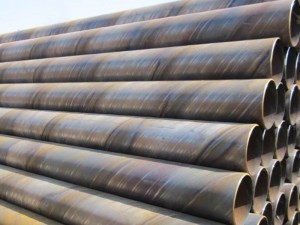
Directly operated by spiral steel pipe manufacturers for construction sites
SY / t5037-2008 is the standard set by the Ministry of petroleum, which is generally called the ministry standard.
-

ASTM A213 T2 T12 T5 T9 T22 P2 P9 alloy steel pipe
Compared with solid steel such as round steel, seamless alloy steel pipe is lighter in flexural and torsional strength and is a kind of economical cross-section steel. Its performance is much higher than that of ordinary seamless steel pipes, because this steel pipe contains more Cr than alloy seamless steel pipes, and its high temperature resistance, low temperature resistance, and corrosion resistance are not comparable to other seamless steel pipes, so alloy pipes It is widely used in petroleum, chemical, electric power, boiler and other industries. T12 alloy pipe has the characteristics of large thermal conductivity, small expansion coefficient, good oxidation resistance, and excellent stress corrosion resistance. It is mostly used in the manufacture of atmospheric, corrosion-resistant, and high-temperature resistant projects. T12 alloy pipe is based on high-quality carbon structural steel pipe by adding one or several alloying elements to improve the mechanical properties, toughness and hardenability of steel. The production of T12 alloy pipe usually requires heat treatment, normalization or quenching and tempering. Before use, it usually needs to undergo quenching and tempering or surface chemical treatment, carburizing, nitriding, surface quenching or high-frequency quenching.
T91 alloy tube belongs to ferritic and austenitic alloy steel seamless steel tubes for boilers, superheaters and heat exchangers (ASTM A213 / A213M-07a)
use:
Used for heating surface pipes of low and medium pressure boilers (working pressure generally not greater than 5.88Mpa, working temperature below 450℃); used for high pressure boilers (working pressure generally above 9.8Mpa, working temperature between 450℃~650℃ ) Heating surface pipes, economizers, superheaters, reheaters, petrochemical industry pipes, etc.
Heat treatment of T91 alloy tube:
The final heat treatment of T91 is normalizing + high temperature tempering. The normalizing temperature is 1040℃, the holding time is not less than 10 min, the tempering temperature is 730~780℃, and the holding time is not less than 1h. The final structure after heat treatment is tempering. Fire martensite -
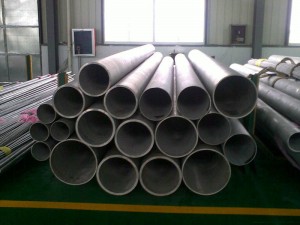
TP304L stainless steel pipe with complete specifications
304 stainless steel is a common material in stainless steel, with a density of 7.93 g / cm ³, It is also called 18 / 8 stainless steel in the industry. High temperature resistance of 800 ℃, with the characteristics of good processing performance and high toughness, it is widely used in industry, furniture decoration industry and food and medical industry.
-
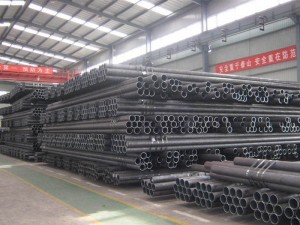
SA210C STPL39 STS49 STPT49 ST52 ST35N low temperature steel pipe genuine spot
Q345C seamless steel pipe is compared with Q345A and B. Low temperature impact test has low temperature and good performance. Ratio of P and s containing hazardous materials to Q345A, Differences between Q345A, Q345B and Q345C
-

Spot sales of large caliber rectangular tube
Such as pipelines for transporting oil, natural gas, gas, water and some solid materials. Compared with solid steel such as round steel, steel pipe has the same bending and torsional strength and light weight. It is an economic section steel.
-
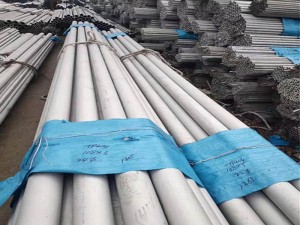
Various specifications of stainless steel in stock
Stainless steel seamless pipe is a long strip of steel with hollow section and no joint around it. The thicker the wall thickness of the product is, the more economical and practical it is. The thinner the wall thickness is, the higher its processing cost will be.
-
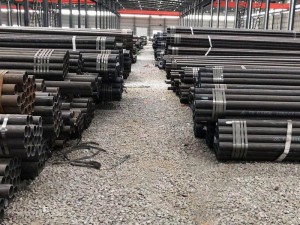
S210C A333GR.6 low temperature resistant steel pipe quality assurance
The steel used for low-temperature alloy tubes is compared with carbon structural steel. It has the advantages of high strength, good comprehensive performance, long service life, wide application range, and relatively economical. The steel is mostly rolled into plates, sections, seamless steel pipes, etc., and is widely used in bridges, ships, boilers, vehicles and important building structures.
Seamless steel pipe for low temperature pipeline
Spot specifications: 8-1240×1-200mm<1/8”—48”×SCH5S—SCH160, STD, XS, XXS>
Product material: 10MnDG, 09DG, 09Mn2VDG, 06Ni3MoDG,
ASTM A333-Grade1, Grade3, Grade4, Grade6, Grade7, Grade8, Grade9,
Grade10, Grade11
Product application: suitable for -45℃~-195℃ low-temperature pressure vessel pipes and seamless steel pipes for low-temperature heat exchanger pipes
Production process: cold drawn and hot rolled
Low-temperature alloy pipes generally use low-alloy high-strength structural steel (GB/T1591-1994)
In addition to a certain amount of basic elements of silicon or manganese, this type of steel also contains other elements suitable for my country’s resource situation. Such as vanadium (V), niobium (Nb), titanium (Ti), aluminum (Al), molybdenum (Mo), nitrogen (N), and rare earth (RE) and other trace elements. According to chemical composition and performance requirements, its grades are Q295A, B, Q345A, B, C, D, E, Q390A, B, C, D, E, Q420A, B, C, D, E, Q460C, D, E, etc. Steel grade means the same meaning as carbon structural steel.
V, Nb, Ti, Al and other grain-refining trace elements, in addition to A, B grade steel in this type of steel, the C, D, E grade steel should contain at least one of them; in order to improve the performance of steel , A and B grade steel can also be added to one of them. In addition, the residual element content of Cr, Ni, and Cu of this type of steel is not more than 0.30% each. Q345A, B, C, D, E are the representative grades of this type of steel, among which grades A and B are usually called 16Mn; steels above grade C need to add more than one trace element, and one additional low-temperature impact property is added to its mechanical properties.
Common materials for cryogenic pipes: Q345B, Q345C, Q345D, Q345E, A33Gr6 -

Quality assurance of large alloy square tube factory
Seamless square pipe is a square steel pipe with four corners. It is a square steel pipe formed by cold drawing and extrusion of seamless steel pipe. There is an essential difference between seamless square pipe and welded square pipe. Steel pipe has hollow section and is widely used as a pipeline for conveying fluid.
-

Corrosion resistant steel pipe manufacturer
Anticorrosive steel pipe refers to the steel pipe processed by anticorrosive process, which can effectively prevent or slow down the corrosion phenomenon caused by chemical or electrochemical reaction during transportation and use.
-

S45C 1045 XC45 C60 seamless steel pipe factory direct sales
S45C is a medium carbon structural steel with good cold and hot workability, good mechanical properties, low price and wide sources, so it is widely used. Its biggest weakness is its low hardenability, large cross-sectional dimensions and high-demand workpieces.
The quenching temperature of S45C steel is A3+(30~50) ℃. In actual operation, the upper limit is generally taken. A higher quenching temperature can speed up the heating of the workpiece, reduce surface oxidation, and improve work efficiency. In order to homogenize the austenite of the workpiece, sufficient holding time is required. If the actual amount of furnace installed is large, the holding time needs to be extended appropriately. Otherwise, there may be insufficient hardness due to uneven heating. However, if the holding time is too long, coarse grains and serious oxidative decarburization will also occur, which will affect the quenching quality. We believe that if the installed furnace volume is greater than the provisions of the process documents, the heating and holding time needs to be extended by 1/5.
Because of the low hardenability of No. 45 steel, a 10% saline solution with a high cooling rate should be used. After the workpiece enters the water, it should be quenched, but not cold through. If the workpiece is cooled in salt water, it may crack the workpiece. This is caused by the rapid transformation of austenite into martensite when the workpiece is cooled to about 180°C. Caused by excessive tissue stress. Therefore, when the quenched workpiece is rapidly cooled to this temperature region, a slow cooling method should be adopted. Since the temperature of the outlet water is difficult to control, it must be operated based on experience. When the shaking of the workpiece in the water stops, the outlet can be air-cooled (oil cooling is better). In addition, the workpiece should be moved but not static when entering water, and should be moved regularly according to the geometric shape of the workpiece. The static cooling medium and the static workpiece result in uneven hardness, uneven stress and large deformation or even cracking of the workpiece.
The hardness of S45C steel quenched and tempered parts after quenching should reach HRC56~59. The possibility of large cross-section is lower, but it cannot be lower than HRC48. Otherwise, it means that the workpiece has not been completely quenched, and sorbite or even ferrite may appear in the structure. Organization, this kind of organization is still retained in the matrix through tempering, failing to achieve the purpose of quenching and tempering.
For high temperature tempering of S45C steel after quenching, the heating temperature is usually 560~600℃, and the hardness requirement is HRC22~34. Because the purpose of quenching and tempering is to obtain comprehensive mechanical properties, the hardness range is relatively wide. However, if the drawings have hardness requirements, the tempering temperature must be adjusted according to the drawings to ensure the hardness. For example, some shaft parts require high strength, so the hardness requirements are high; and some gears and shaft parts with keyways need to be milled and inserted after quenching and tempering, so the hardness requirements are lower. Regarding the tempering and holding time, it depends on the hardness requirements and the size of the workpiece. We believe that the hardness after tempering depends on the tempering temperature, and has little to do with the tempering time, but it must be back through. Generally, the tempering and holding time of the workpiece is always More than one hour. -
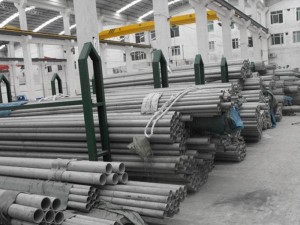
Dachang genuine 304L stainless steel pipe sales
304L stainless steel pipe belongs to the international stainless steel marking method. 304L stainless steel pipe – s30403 (American AISI, ASTM) 304L corresponds to the Chinese brand 00Cr19Ni10. Characteristics and application: steel with lower carbon content than 0Cr19Ni9 has superior intergranular corrosion resistance. It is a component without heat treatment after welding.
-
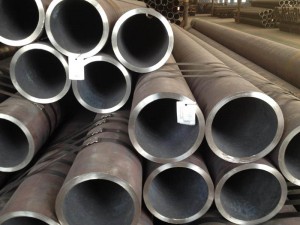
A335 T91 high pressure steel pipe quality assurance
A335 T91 steel is a new type of martensitic heat-resistant steel developed by American National elephant ridge laboratory and Metallurgical Materials Laboratory of American combustion engineering company.

- Call Support 0086-18365819992
- Email Support sales@weichuanmetal.com











